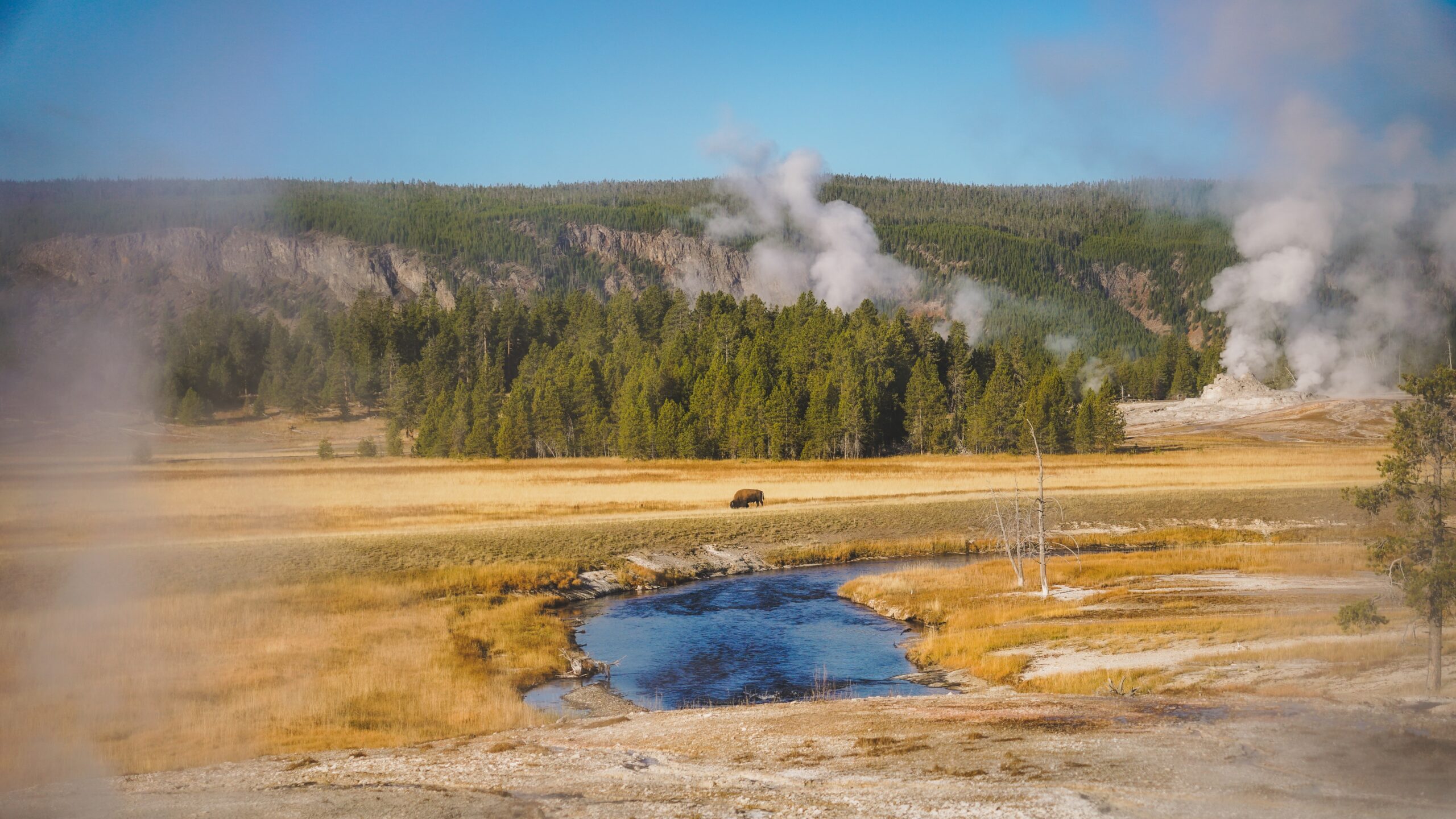At the time of writing this, Yellowstone is celebrating its 150th year of being a national park, the world’s first, opened on March 1, 1872. Yellowstone itself is a supervolcano, the latest eruption occurring about 631,000 years ago that formed a 30-45 mile caldera/basin – the park’s centre. The heat that powered those eruptions still fuel the park’s hydrothermal features today, such as hot springs, geysers, travertine terraces, fumaroles and mud pots.
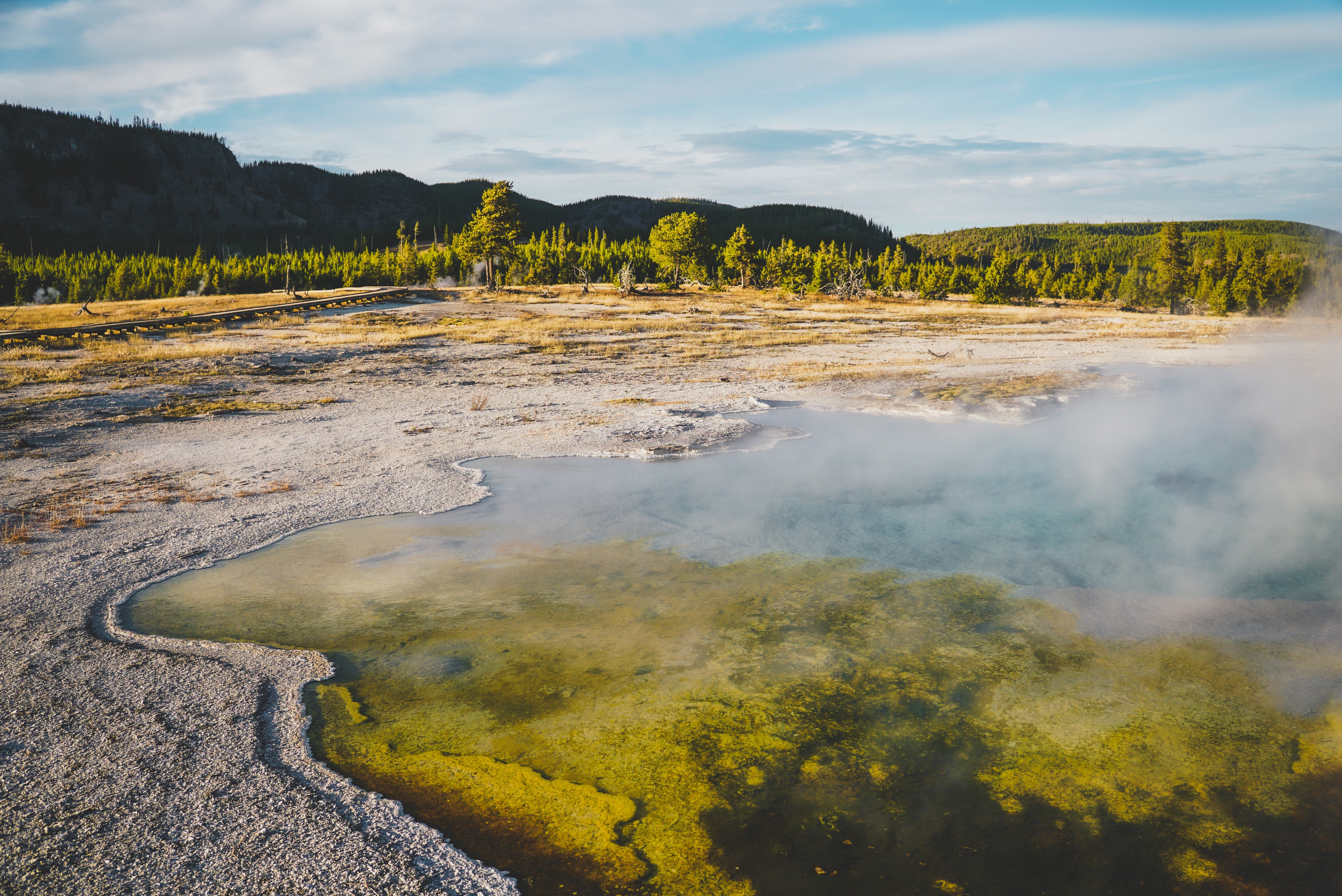
When I began planning this trip in April 2022, little did I know that unprecedented rainfall in June would cause substantial flooding, rockslides and mudslides in the park, and severe damage to roads, water and wastewater systems, powerlines and other critical infrastructure. As such, the North and Northeast entrances and associated roads were closed at the time we visited, and so was Mammoth Hot Springs Hotel. In mid to late October, all campgrounds are closed and only two hotels (including Mammoth Hot Springs) in the entire park are open. We wanted to stay inside the park to minimise driving time to the attractions, so our only option for the 2022 season was Old Faithful Snow Lodge. Our group of three shared a Deluxe Hotel Room with 2 Queen Beds, and the lodge itself is very well heated throughout, though the wifi speeds are slower than average and did not allow access to some of our bank and fantasy sport websites/apps. I personally loved the wood and cabin style decor, and it was extra cozy if you were lucky enough to snag a prime spot in front of the lobby’s fireplace to wind down for the evening. We stayed for 3 nights, from Friday through to Monday, and found that that lodge was at its quietest on the Sunday afternoon/evening.
Tip: As there is no cellphone coverage/reception in the park, download offline Google Maps for the area (both Yellowstone and Grand Teton National Parks)
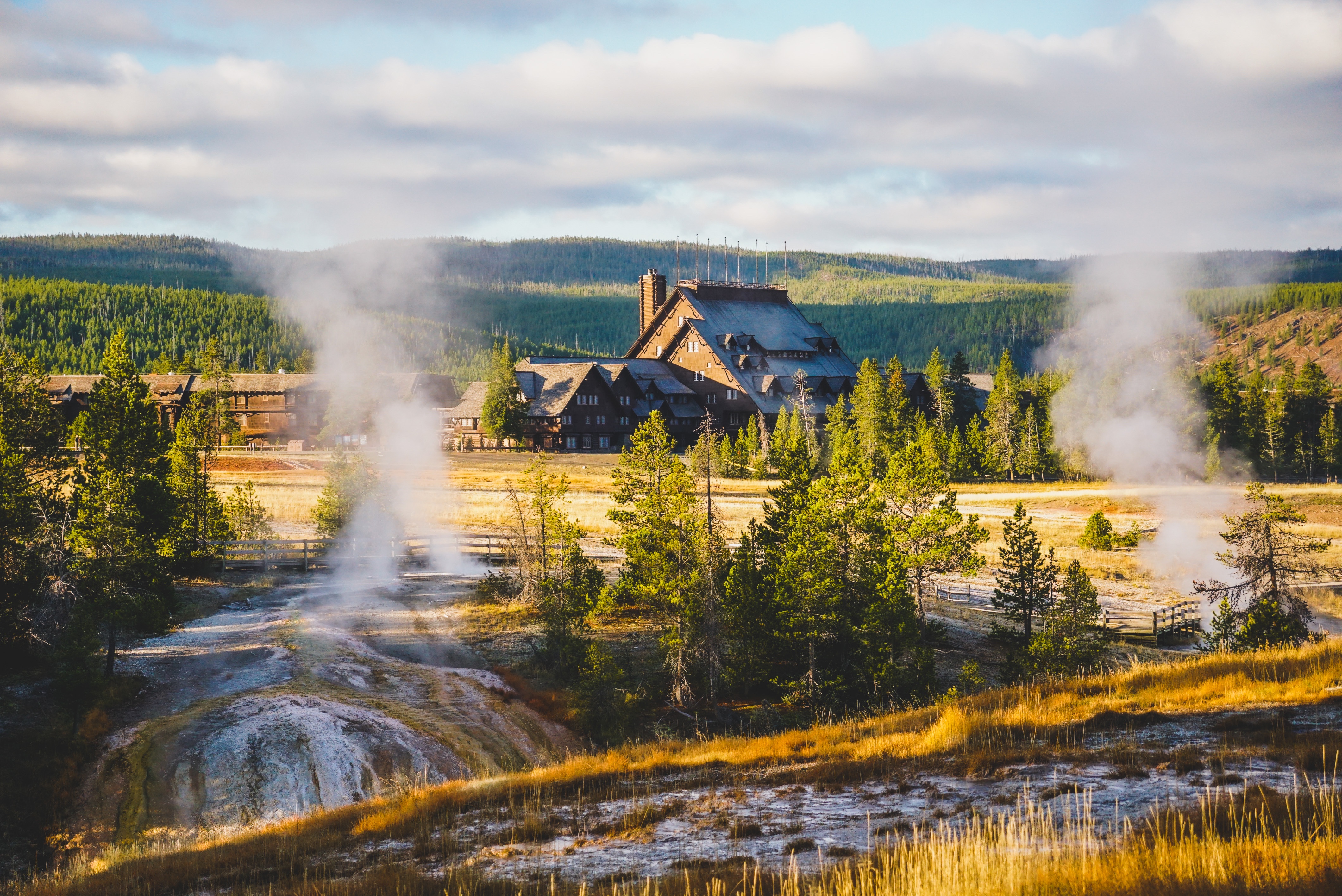
At Old Faithful Snow Lodge, the Bear Den Gift Shop, Geyser Grill and Obsidian Dining Room were all open when we visited, and we picked up some 150th anniversary souvenirs and general park merchandise. The Geyser Grill was good for a quick bite (burgers and chilli) and filling up my drink bottle with hot water, whereas the Obsidian Dining Room offers a sit down service for lunch and dinner and a breakfast buffet option. Reservations are required for dinner only, and include offerings such as prime rib, red trout, roast chicken and pasta. The restaurant also served Snake River Brewing’s Hop Springs IPA which was brewed in honour of Yellowstone National Park’s 150th anniversary (hopped with Citra, Mosaic & Galaxy varieties).

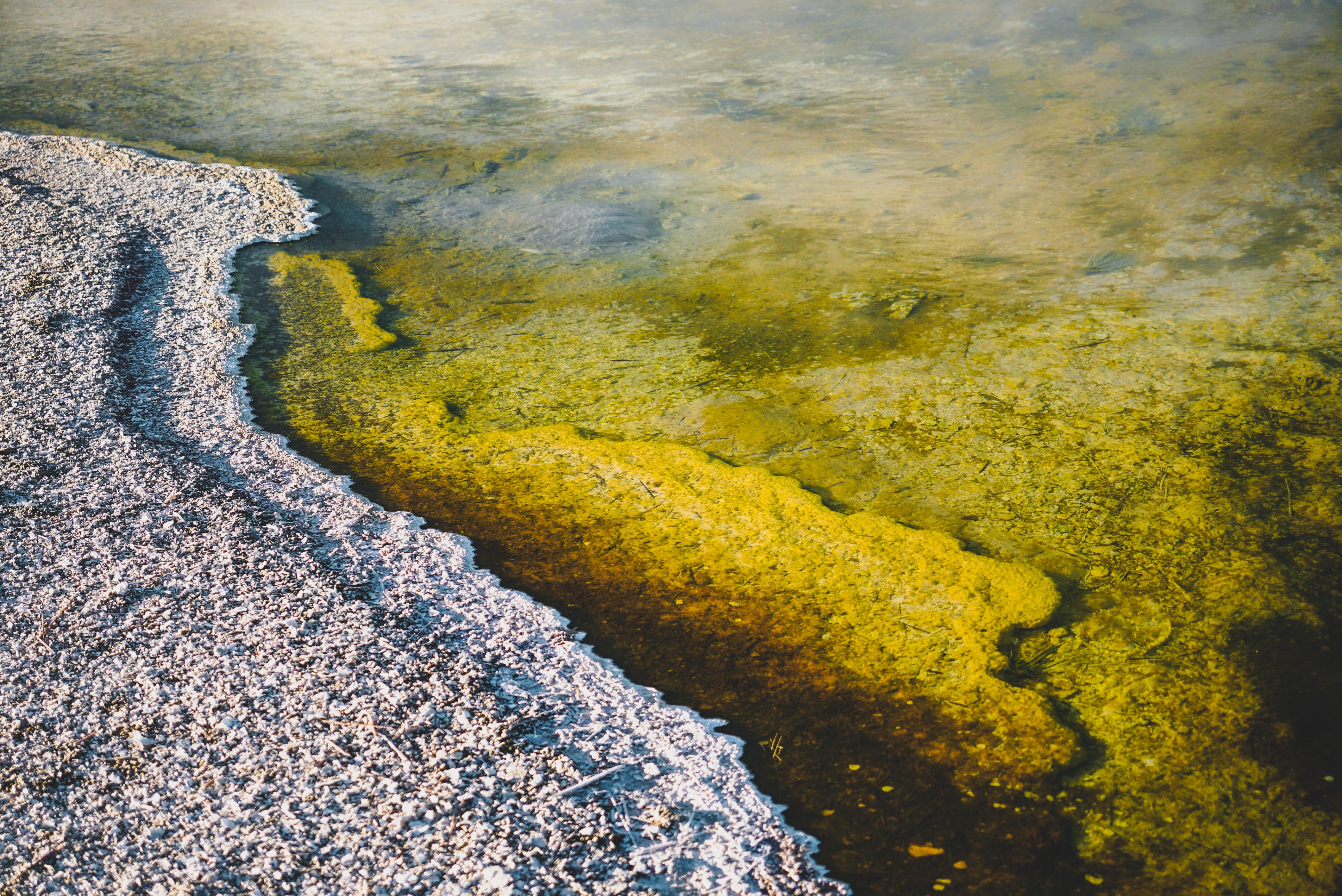
Day 1
We spent most of the first day driving from Salt Lake City to West Yellowstone, entering the national park through its West Entrance. The drive took 4.5-5 hours and takes you through the states of Utah, Idaho, Montana and Wyoming. We made sure to do a supermarket shop before setting off as most of the park’s services were closed for the season, though the Old Faithful General Store was open for its final weekend during our stay. There was still merchandise for sale but less than 5-10% of packaged food and supplies remaining. We stopped in West Yellowstone to check out the visitor information centre and a store or two for some pins and patches, then entered the West Entrance at 4.30pm and headed south to Lower and Midway Geyser Basins. What prompted us to stop was the dramatic steam rising from the ground and we wandered the boardwalks at Fountain Paint Pot, Grand Prismatic Spring and Biscuit Basin until the sun set. The best thing about staying in the Old Faithful area is how close you are to all the attractions in the Lower, Midway and Upper Geyser Basins, along the Firehole River. The majority of the world’s active geysers are in the Upper Geyser Basin, and there are only four other locations in the world that have a large concentration of geysers – Kamchatka (Russia), Chile, Iceland and our very own New Zealand!
It costs $35 per vehicle for a week long pass to the park, and tickets can be purchased at any park entrance station or visitor information centre. The drive from the West Yellowstone Entrance to Old Faithful area takes 50 minutes, not including any bison jams you may encounter!
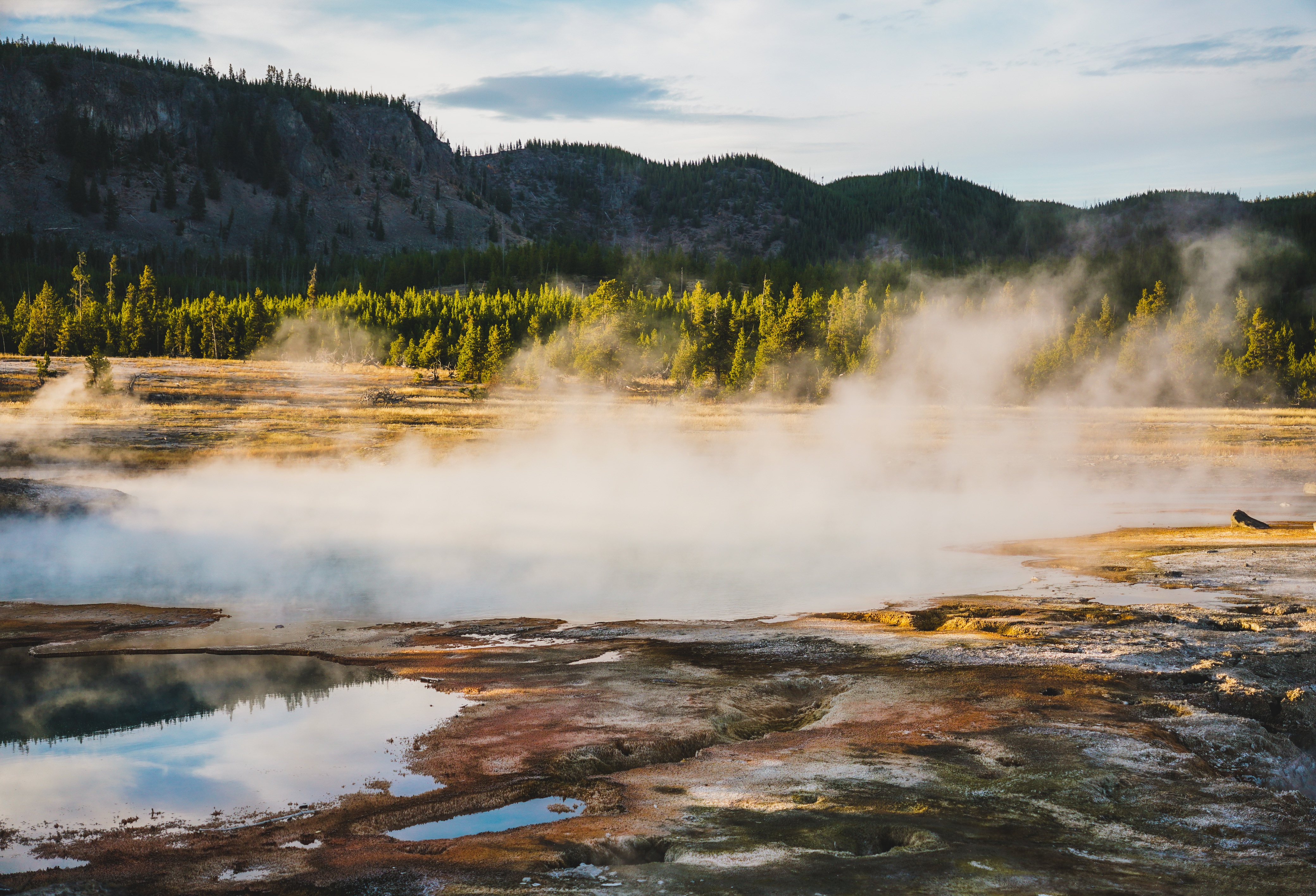
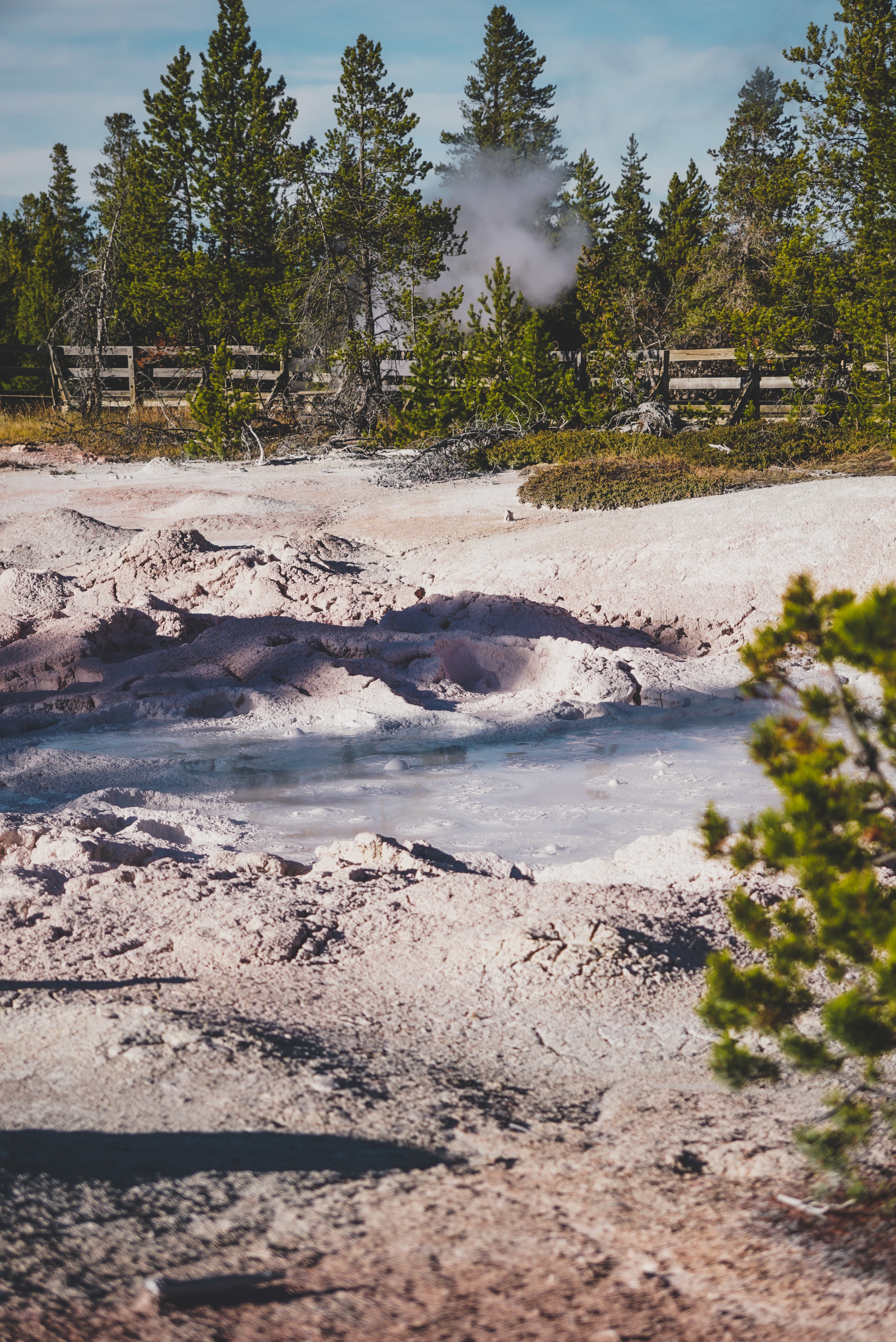
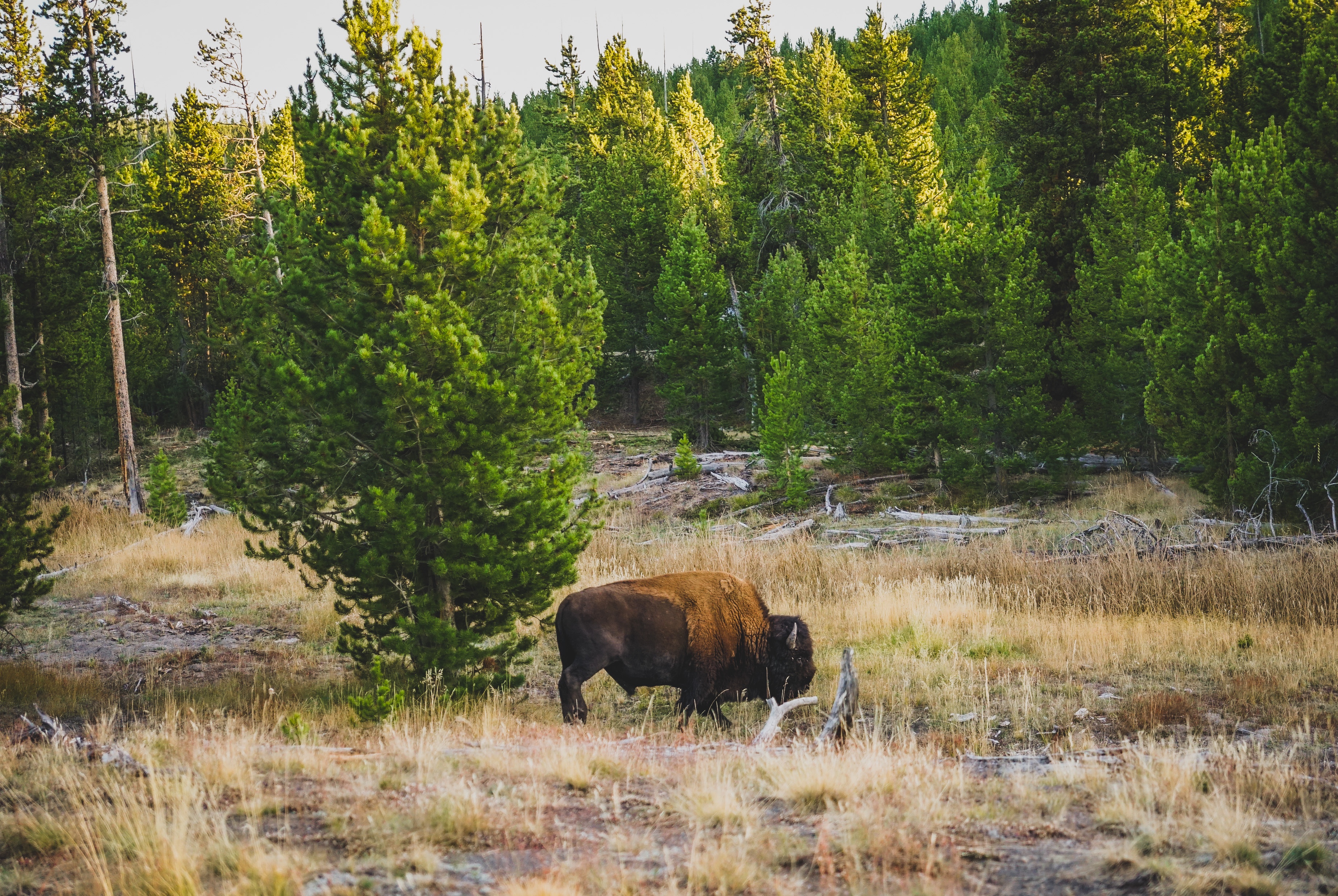
Day 2
Rangers forecast the eruption of six geysers in the Lower and Upper Geyser Basins, including Old Faithful which on average erupts every 90 minutes (+/- 40 minutes). This information was available in the lobby of Old Faithful Snow Lodge and the Old Faithful Visitor Education Centre. We started the day witnessing an early morning eruption of Old Faithful during golden hour, followed by a brief break from the cold air at the visitor centre and gift shop, and then a stroll around Geyser Hill.
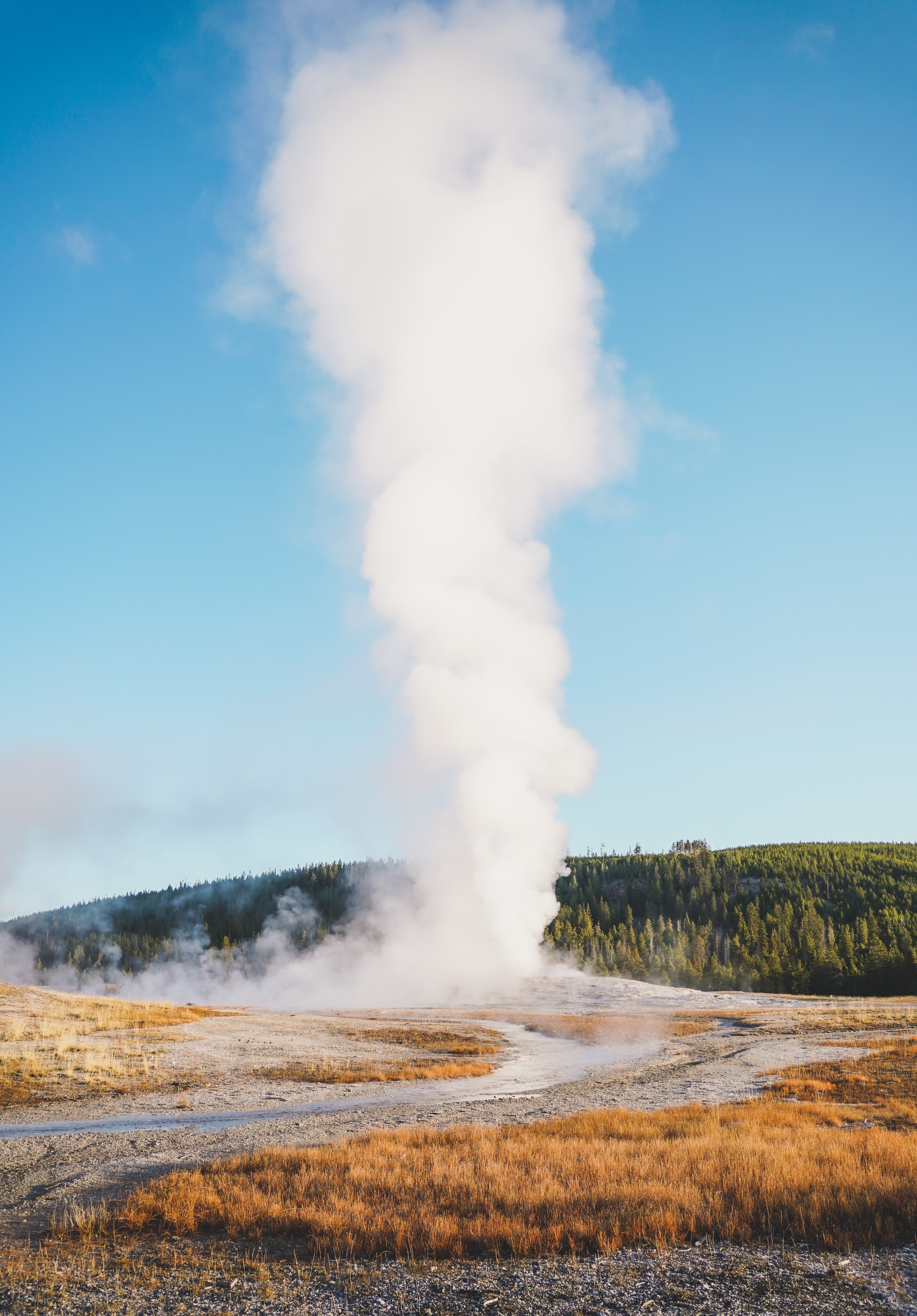
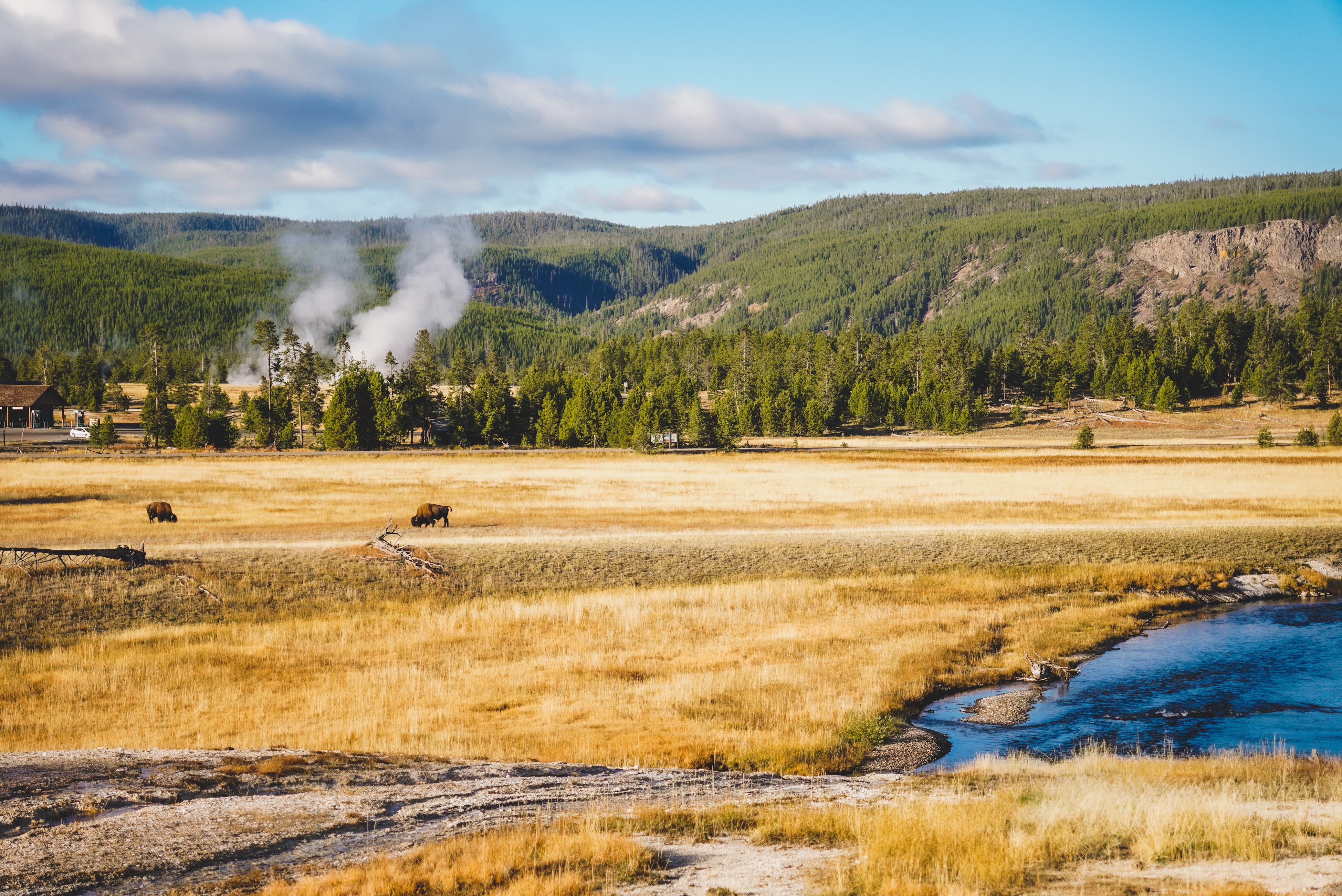
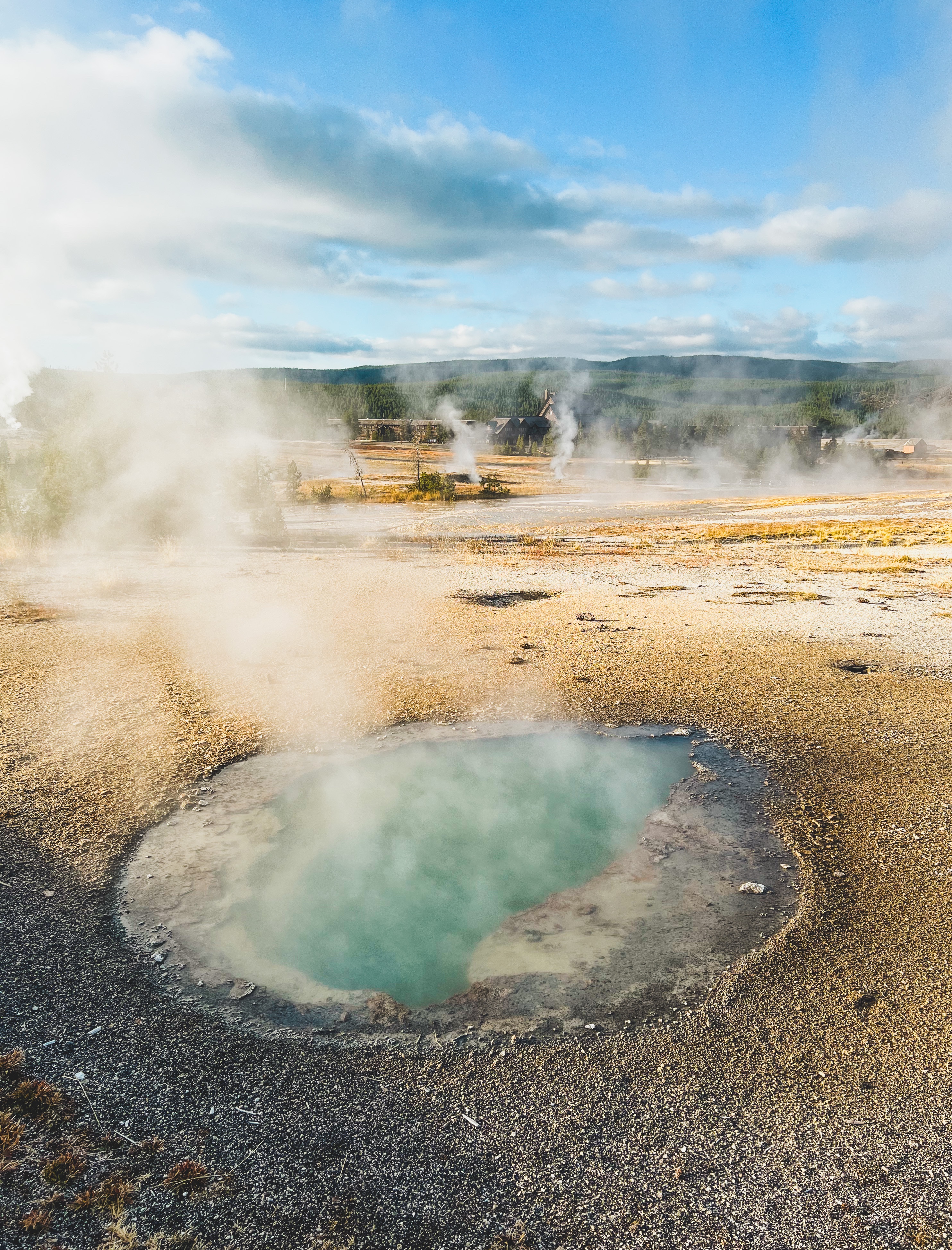
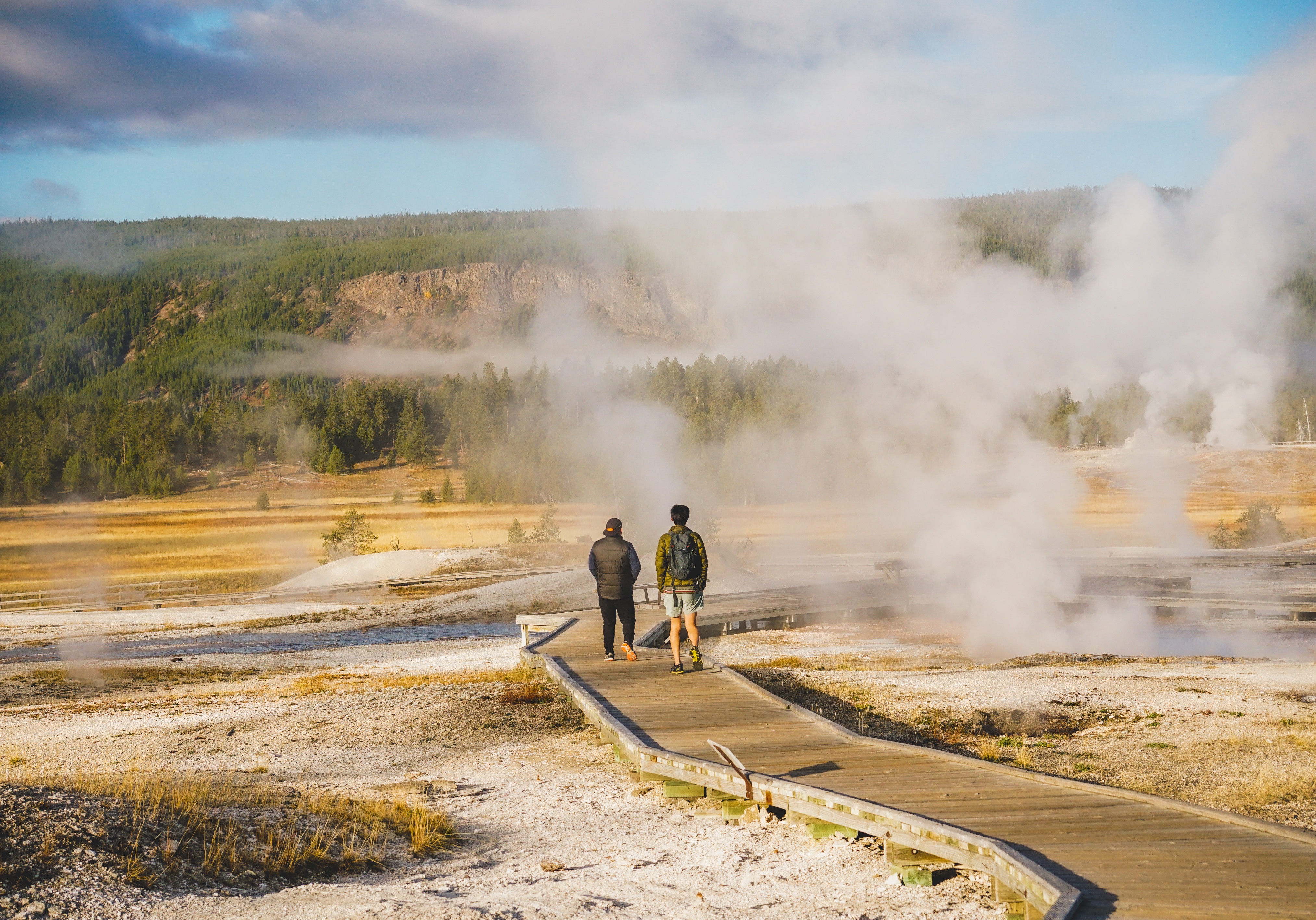
There are trail guides available throughout the park for a donation, and the Old Faithful one (the trail guide box is located in front of the Old Faithful Lodge & Cabins) has a great map of the Upper Geyser Basin, detailing the boardwalks, paved trails, roads, rivers and attractions, including trail distances from the visitor centre. Yellowstone National Park is one of the most accessible parks and a printed guide/more information is available at all visitor centres and on the park website here.
Thermal Features 101:
Fumaroles – these are steam vents and are the hottest hydrothermal features in the park. When rain or snow melt drain into the fumarole’s plumbing, it converts instantly to steam and may be hotter than boiling.
Geysers – magma, water and underground cracks/constrictions form the 3 ingredients for an eruption of steaming water.
Hot Springs – these are closely related to geysers, but their underground channel systems are not constricted. They are the most common hydrothermal feature in the park and vary from boiling water to clear, calm pools.
Mudpots – these are acidic features with a limited water supply. Microorganisms convert smelly hydrogen sulphide gas into sulphuric acid, which breaks down rock into clay. When various gases escape through the clay, it causes bubbling.
Travertine Terraces – at Mammoth Hot Springs, the interactions of hot water and underground limestone create chalk-white travertine terraces at the surface.
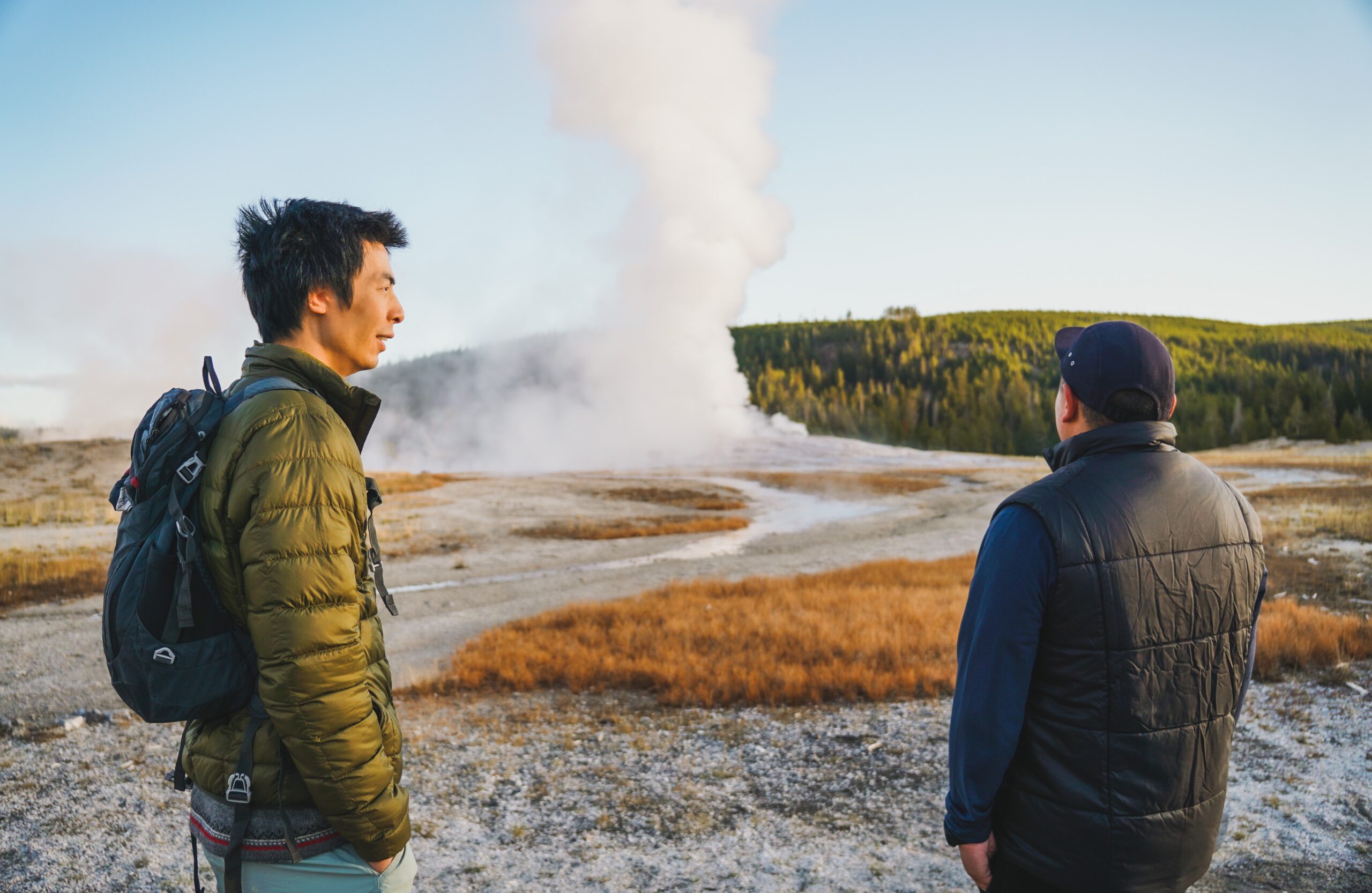
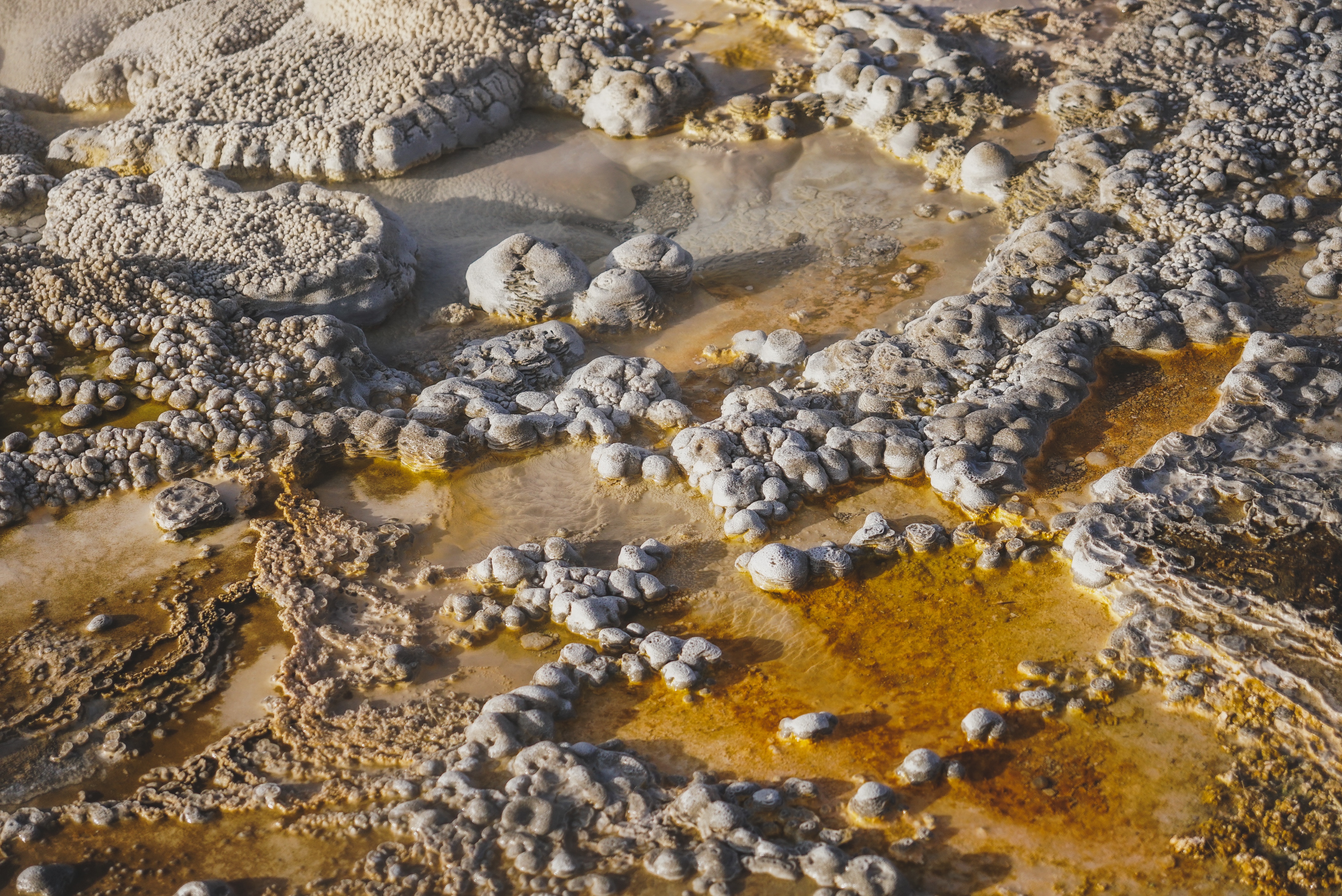
From Old Faithful Snow Lodge, we drove one hour to Canyon Village via Madison and Norris, and hiked the Brink of Lower Falls Trail to an observation platform at the top of the Lower Falls. The views out onto the colourful Grand Canyon of Yellowstone are spectacular, and this short but steep trail takes ~30 minutes to complete (0.8 mile/1.3 km of in-and-out switchbacks). We also did the North and South Rim drives to Inspiration Point and Artist Point, and paid a visit to the Canyon Visitor Education Centre. Unfortunately, the general store and Canyon Lodge Gift Shop and eateries were already closed for the season.
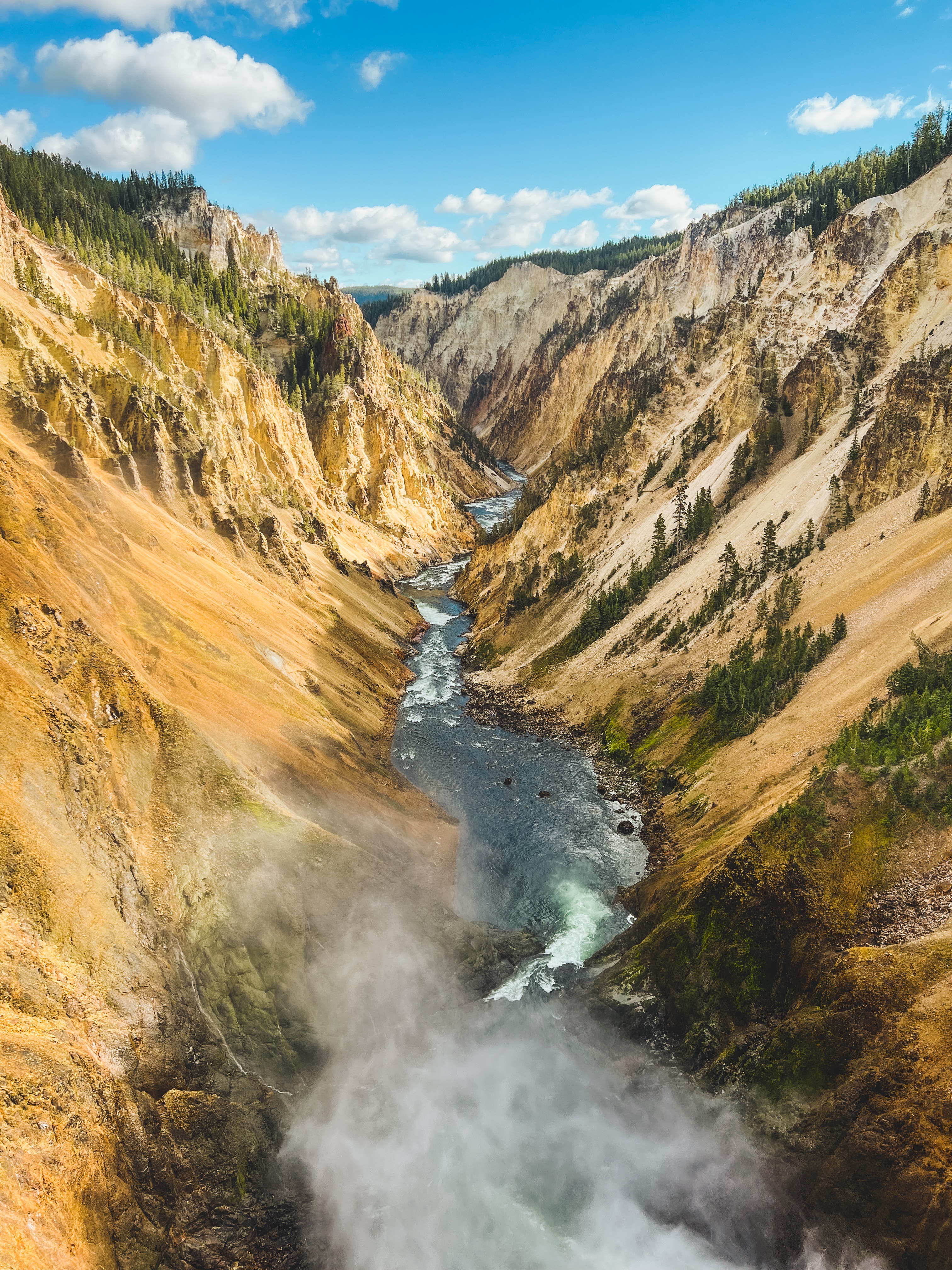
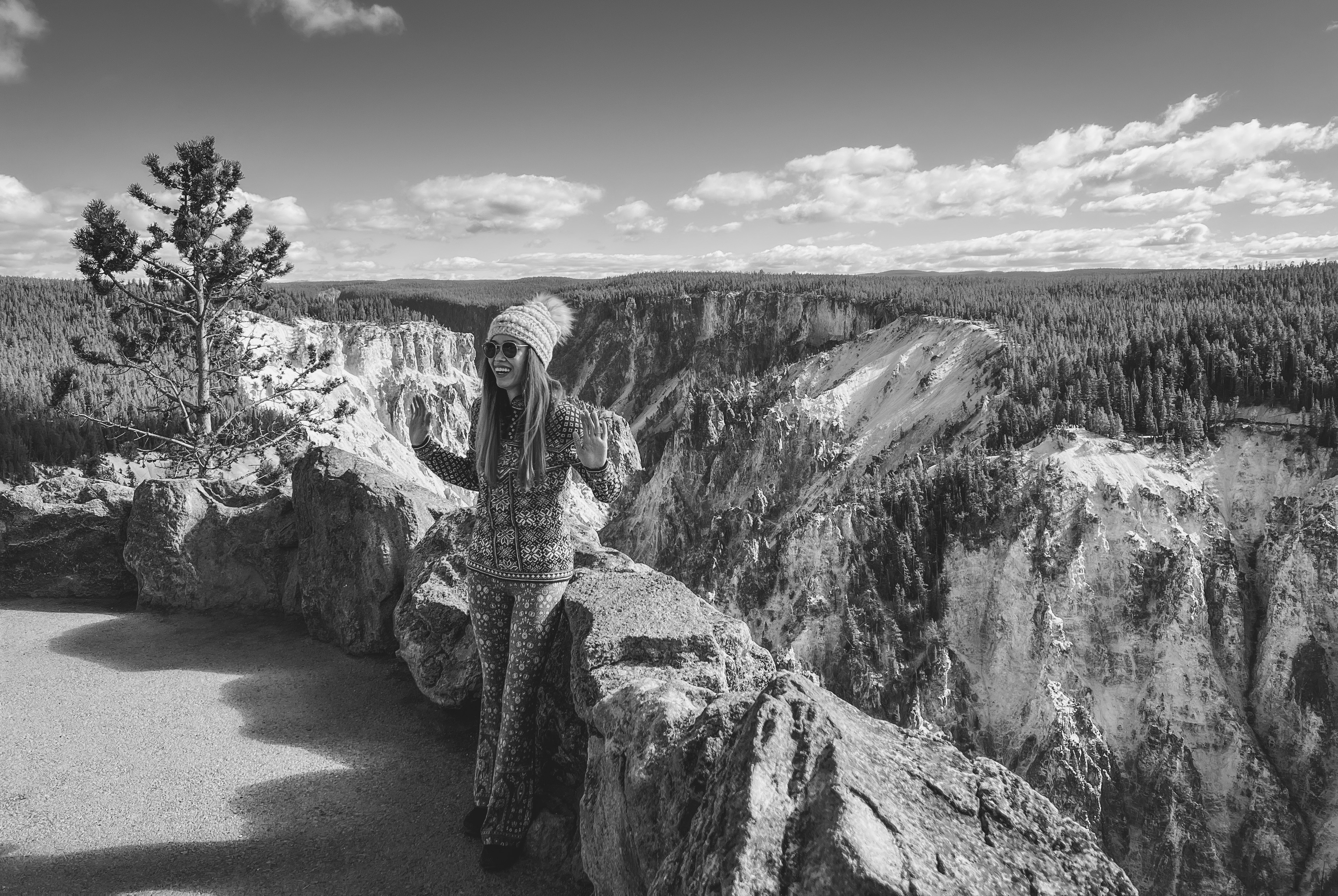
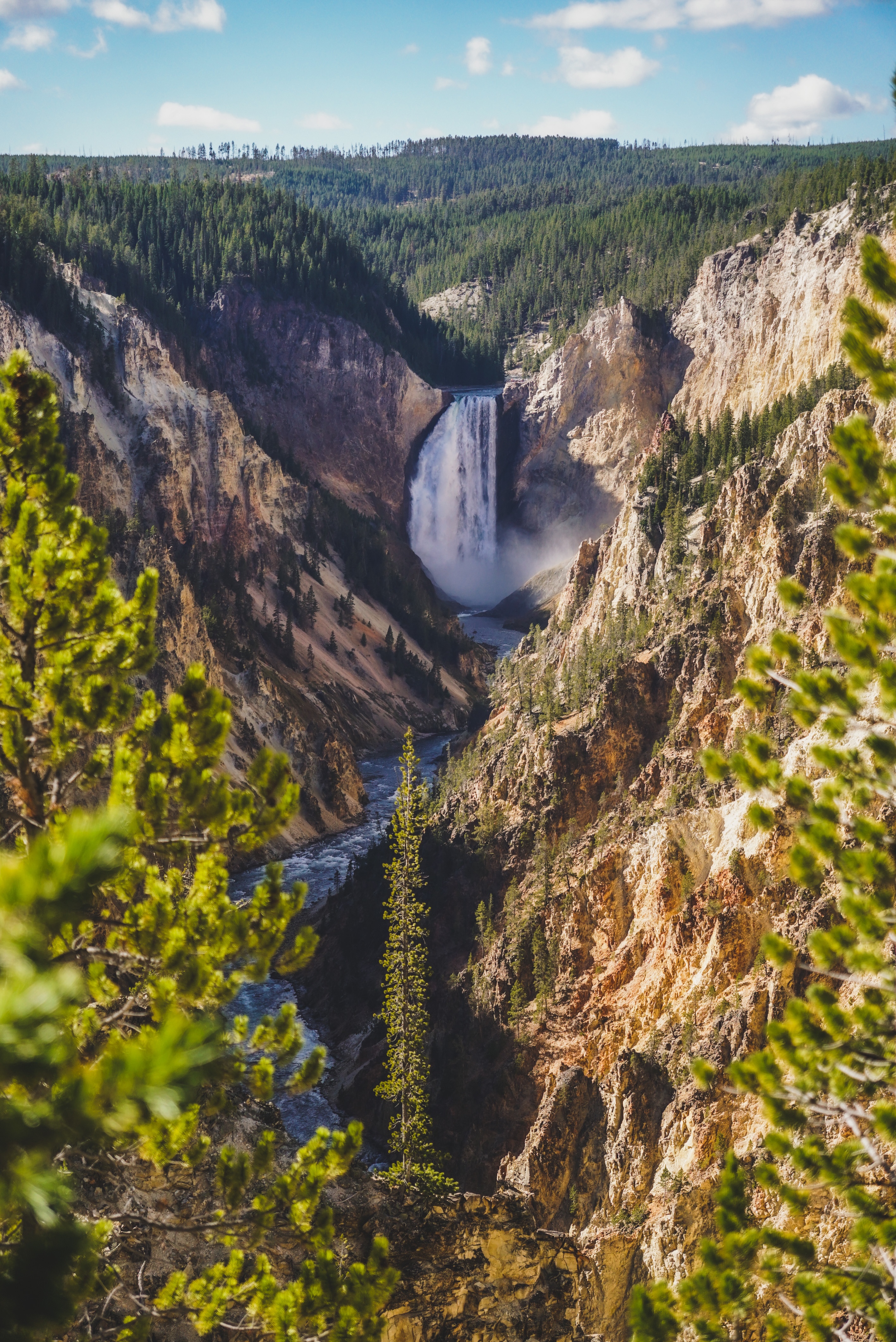
Next up was a visit to Norris Geyser Basin, known as one of the hottest and most dynamic hydrothermal areas of Yellowstone. As you walk through the Norris Geyser Basin Museum Entrance, you will be greeted with a dramatic view of the chalk-white Porcelain Basin, circled by an inviting boardwalk. The Porcelain Basin loop is an easy 0.9 mile/1.45 km walk and I would recommend doing only this if you are short on time. The Back Basin Trail was more of the same but not as interesting as some of the features we saw in Lower, Midway and Upper Geyser Basins. Of note, the Fall 2022 Yellowstone Visitor Guide states that you may park your car in the Norris area at your own risk, but when Steamboat Geyser erupts, dissolved minerals in the spray can damage glass and metal surfaces on vehicles.
Although the North Entrance to the park was closed, we were able to drive an hour north to see Mammoth Hot Springs. Luckily, the Albright Visitor Centre and Gift Shop were still open, and we spent the late afternoon exploring the travertine terraces and spotted a group of elk lazing on the grassy lawns around the township’s buildings.
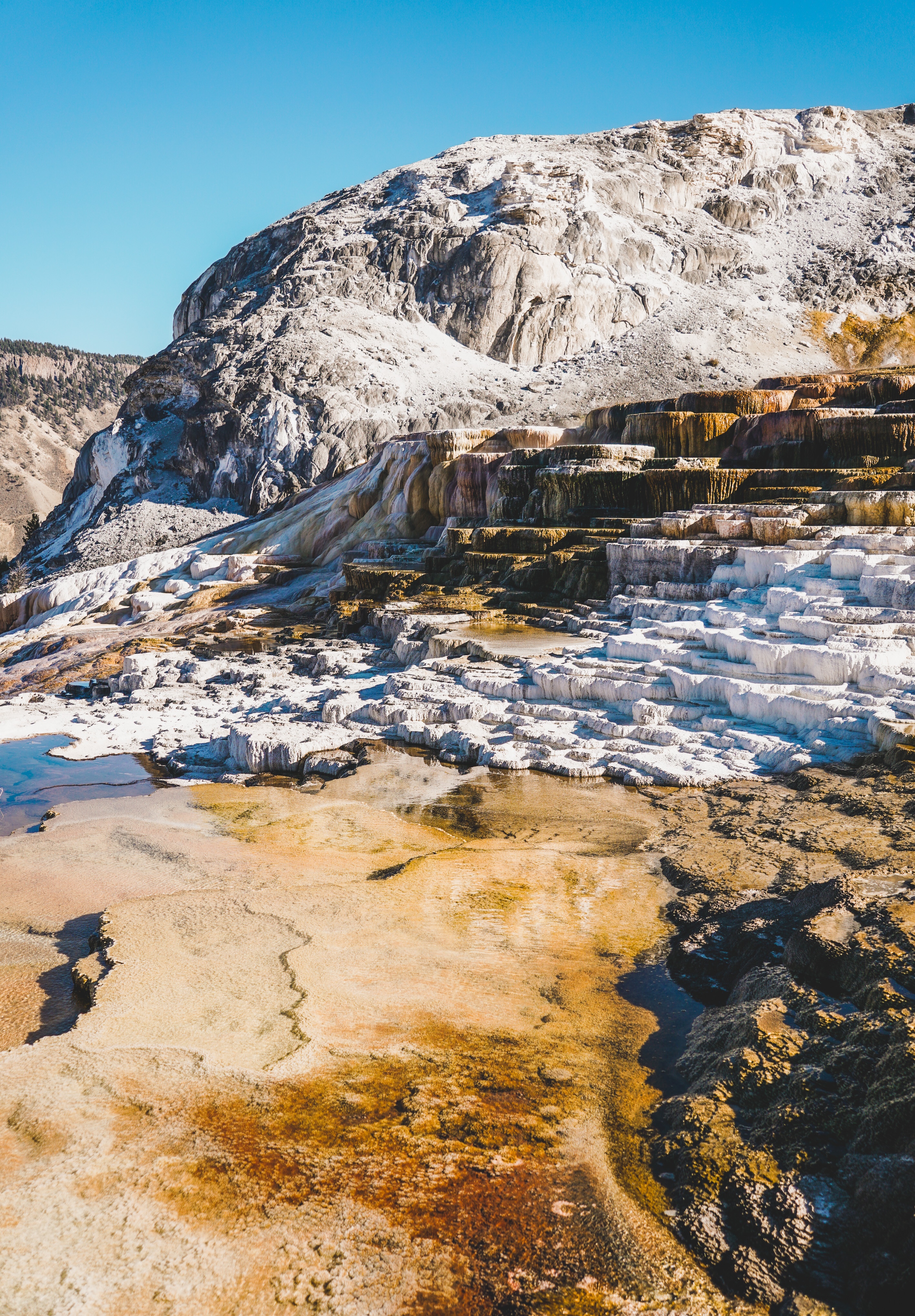
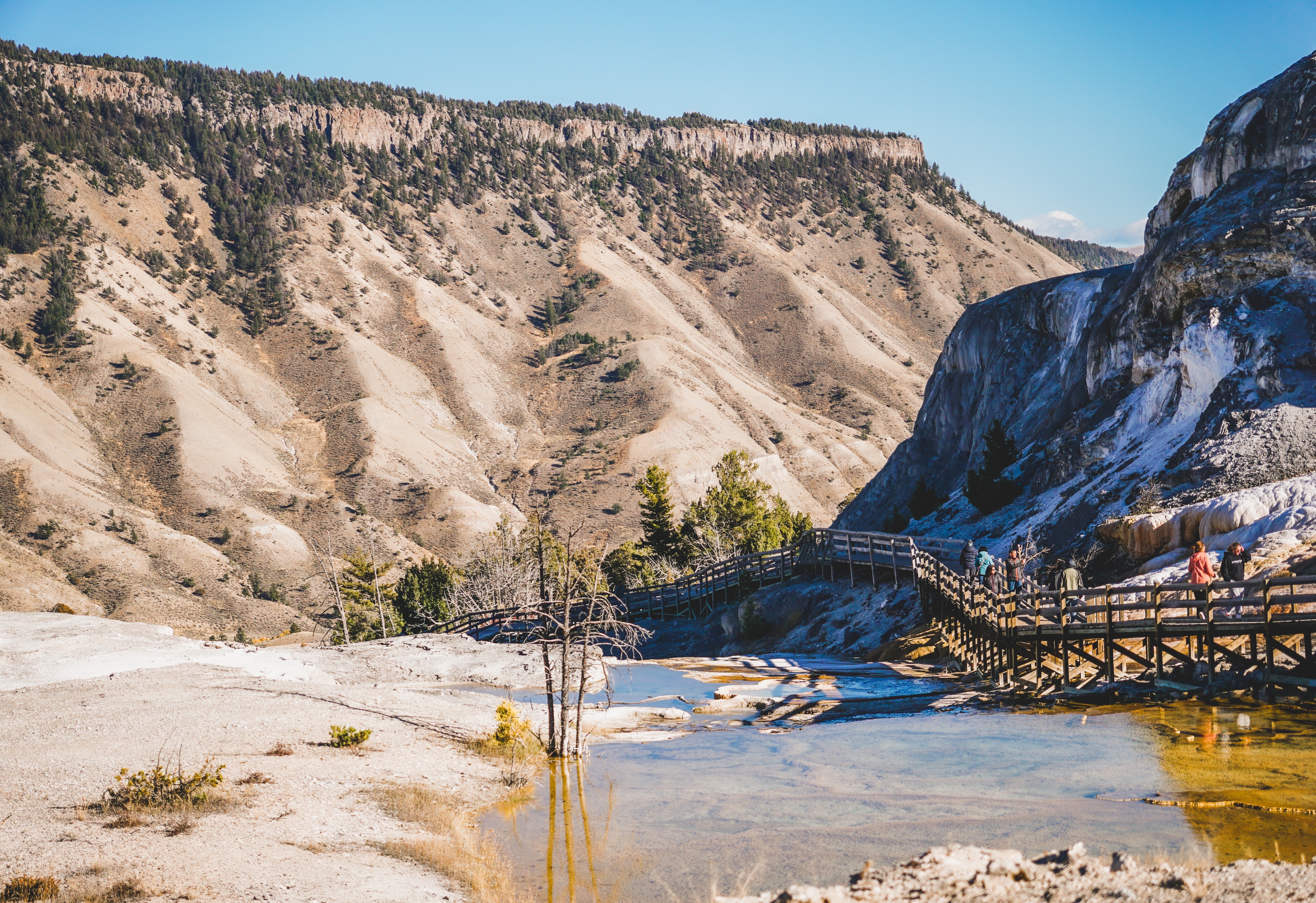
Day 3
Day 3 began with a very chilly stroll around the boardwalk at Black Sand Basin. It is only 1.6 miles/2.7 km from Old Faithful, and features some of the most magnificent hot springs in Yellowstone including Emerald Pool and Rainbow Pool. Sunset Lake is actually a geyser but its eruptions are not easily noticed due to the heavy steam over the water. Cliff Geyser on the edge of Iron Spring Creek on the other hand, erupts every few minutes up to 12 metres.
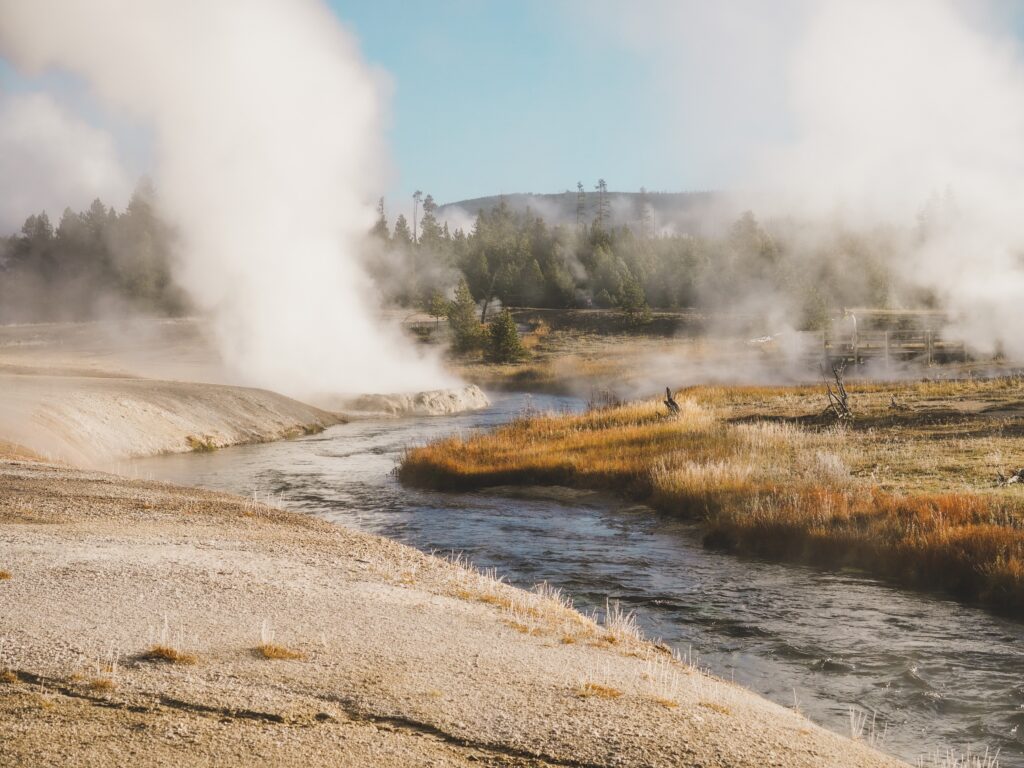
From Black Sand Basin, we headed east to the West Thumb Geyser Basin and Yellowstone Lake, dodging plenty of potholes on the road. Yellowstone Lake is the largest high elevation lake (>7000 ft/2130 m) in North America and is covered by ice from December to May. Many of the 1000-3000 earthquakes that occur in the park annually are happening under the lake due to movement of magmatic fluids below. This continues to shape the lake’s shoreline. No services e.g. general stores, gift shops, lodging, visitor centres or boat rentals are available from early/mid October, and swimming is not recommended due to park waters being swift and cold.
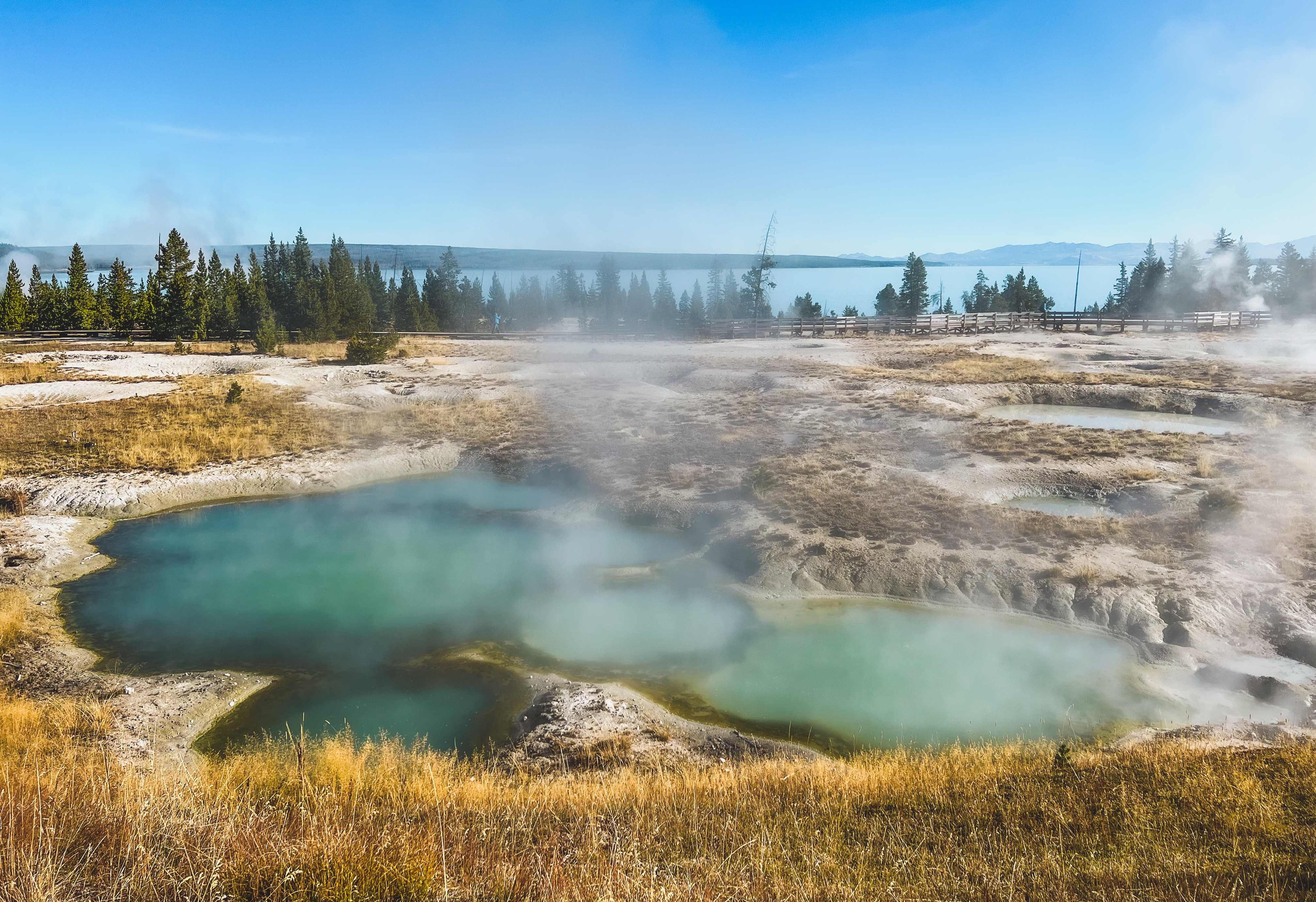
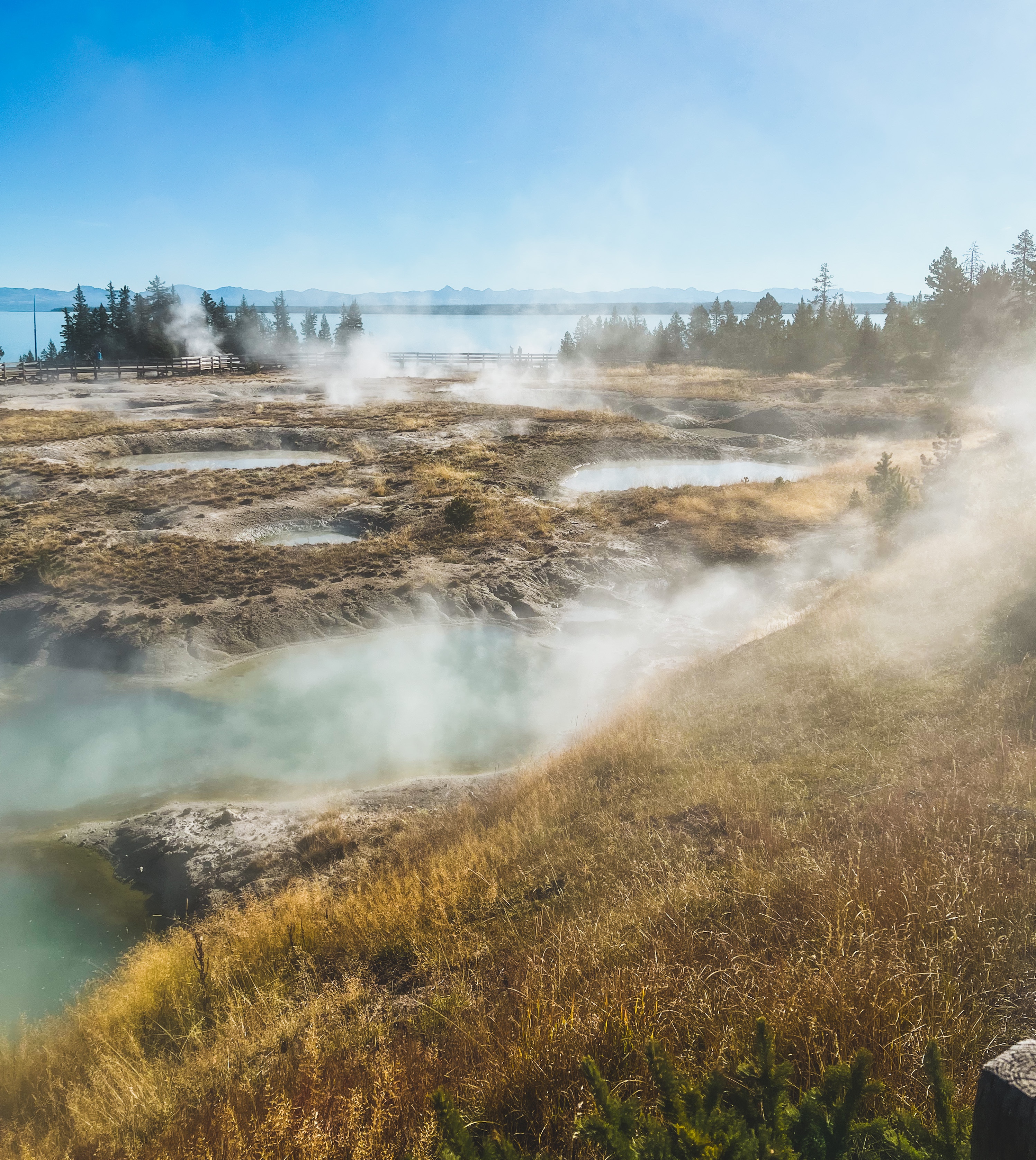
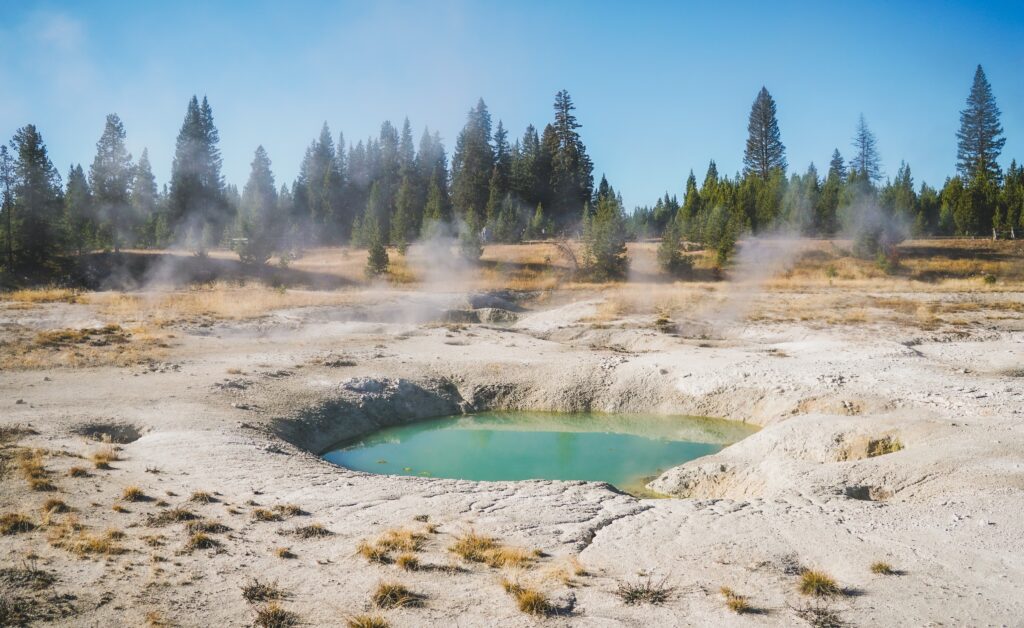
We followed the shores of Lake Yellowstone north and stopped by Mud Volcano and Hayden Valley. The sounds coming from Dragon’s Mouth Spring were incredible – it really did sound like Smaug hiding in a cave! The pungent sulphur smells are particularly strong in Mud Volcano, and you can follow a 1 km loop trail to view the acidic springs and muddy hydrothermal features. This loop is more steep than others in the park. Hayden Valley and its vast sub-alpine plain is known for animal spotting at dawn and dusk, including black and grizzly bears, wolves, bison herds, foxes, moose and elk. Black bears are usually seen along the edges of wooded areas in the Lamar and Hayden Valleys, or among the trees near Mammoth and Tower, whereas grizzly bears are usually seen in open areas. The animals in Yellowstone are not tame and whilst some seem to tolerate humans, they can charge without warning. As a general rule, do not feed animals, store all food properly including cookware, stay at least 25 yards/23 m from all animals and 100 yards/91 m from bears and wolves, and move away if an animal moves closer to you (don’t run) or changes their behaviour due to your presence.
Whilst we are talking about safety, keep in mind that the thermal areas are at boiling or higher temperatures. Stay on boardwalks and designated trails, do not push or shove other people, keep foreign objects, hands and feet out of the water, and simply watch where you step.
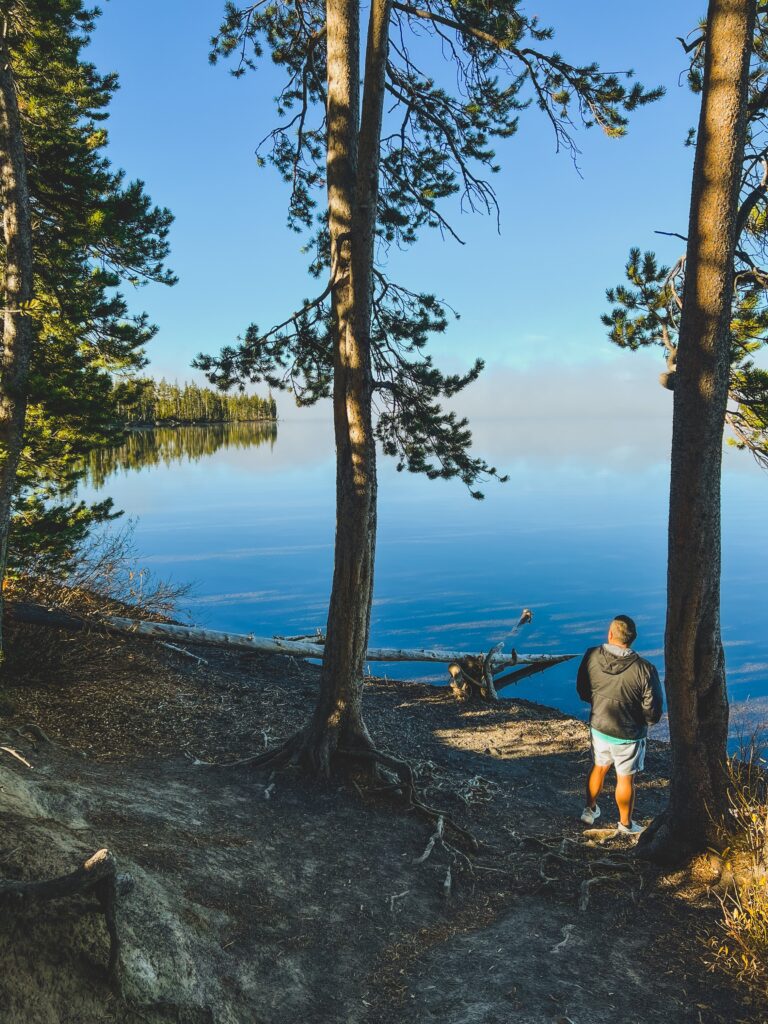
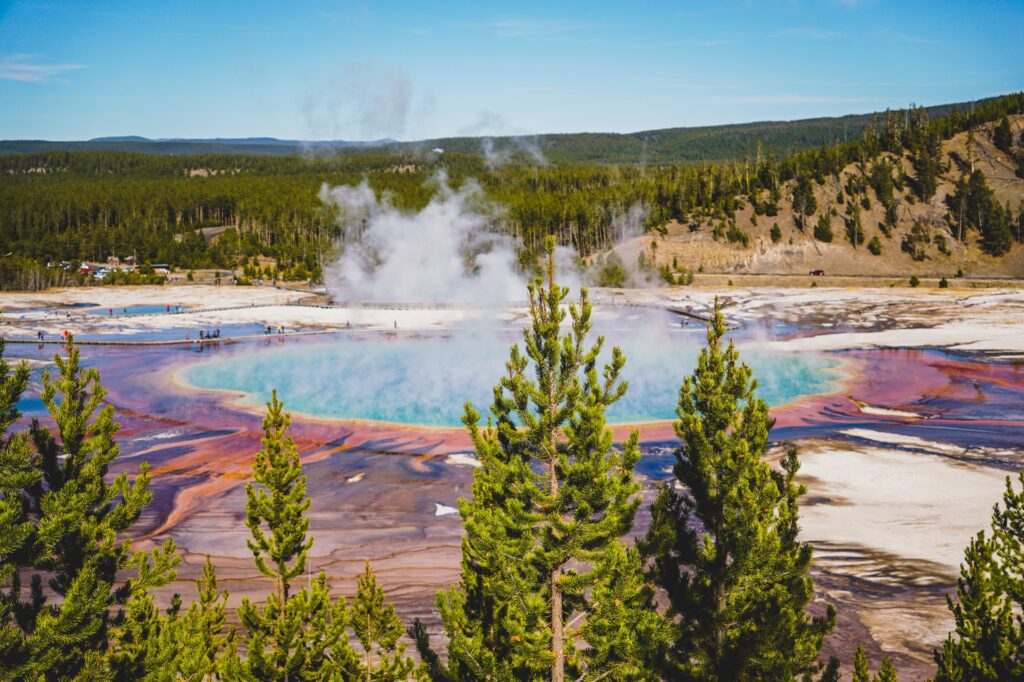
On the way back to the Old Faithful area, there is a turn off south towards Grand Teton National Park. On the day you are either travelling to or from the Tetons, you will drive by Lewis Lake which was perfectly calm and glassy when we visited, a great spot for a snack break or to stretch your legs. We continued west back to the Fairy Falls Trailhead to hike to the Grand Prismatic Spring Overlook. This is a much better view of the colourful spring and away from the crowds at ground level. The trail is 1 mile/1.6 km from the carpark to the overlook and is best done when the sun is high on a clear day.
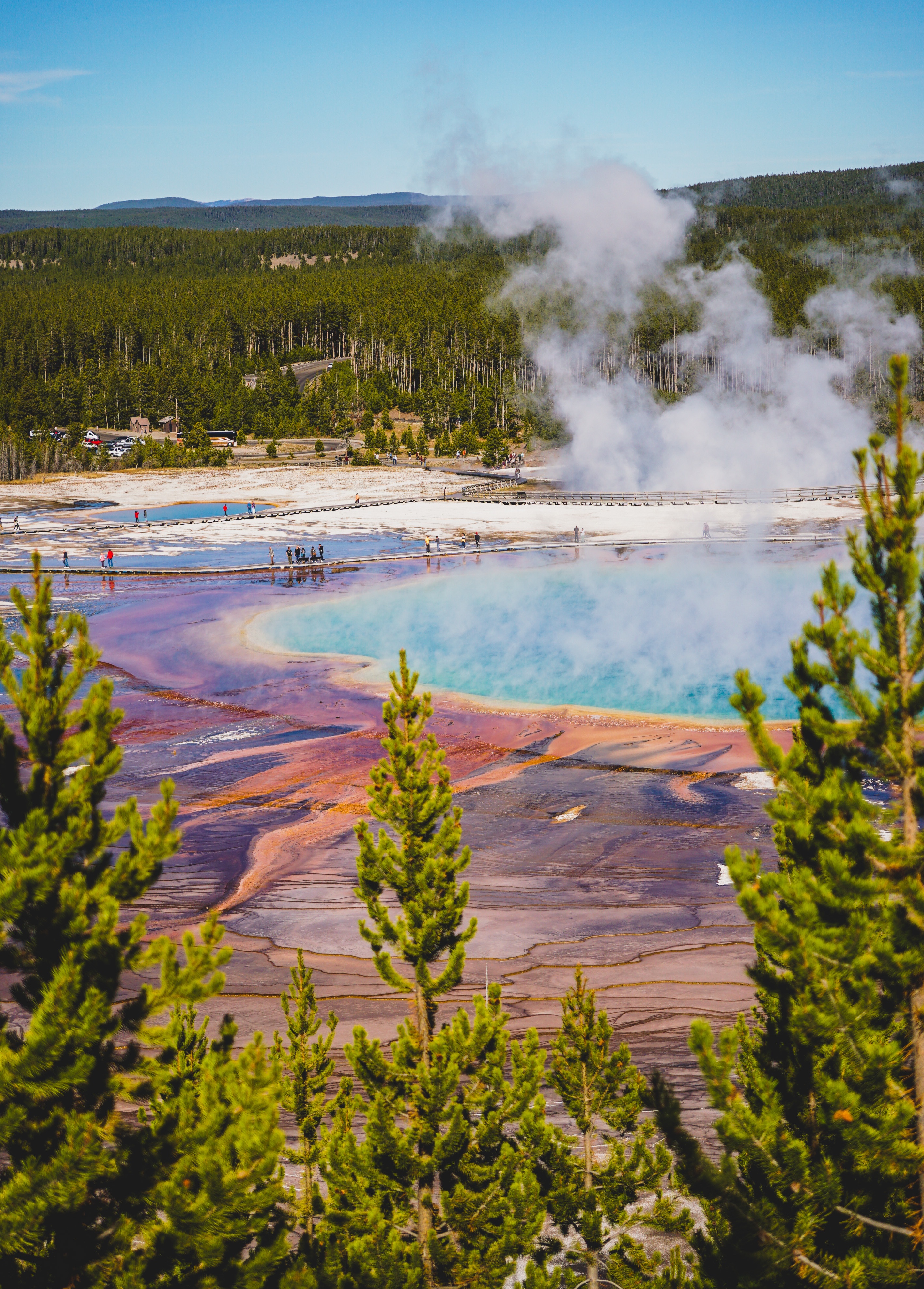
For our final foray around the park, we set our sights on Morning Glory Pool, a 2.8 mile/4.4 km round trip from the Old Faithful Visitor Centre. You can take the boardwalk on the north side of the Firehole River, or the paved trail on the south side, and extend the route to include Daisy Geyser. This stretch of trail will have you passing more than 20 hot springs and geysers, and the gradient is gentle. (We did this as a loop, going anticlockwise on the boardwalk first).
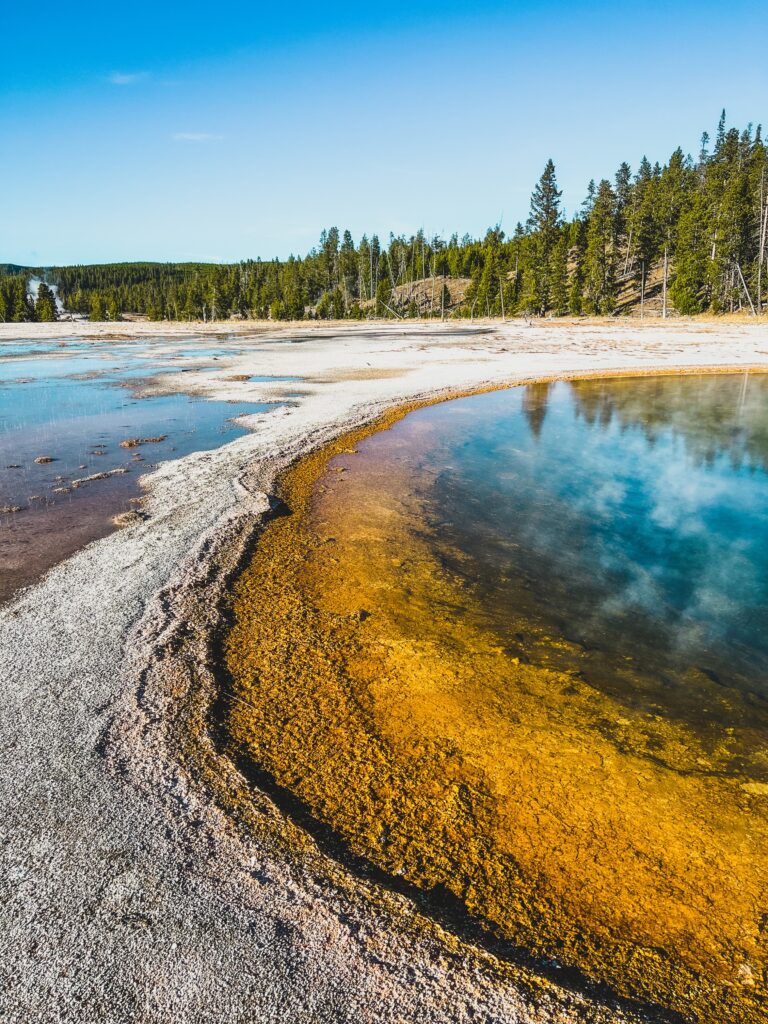
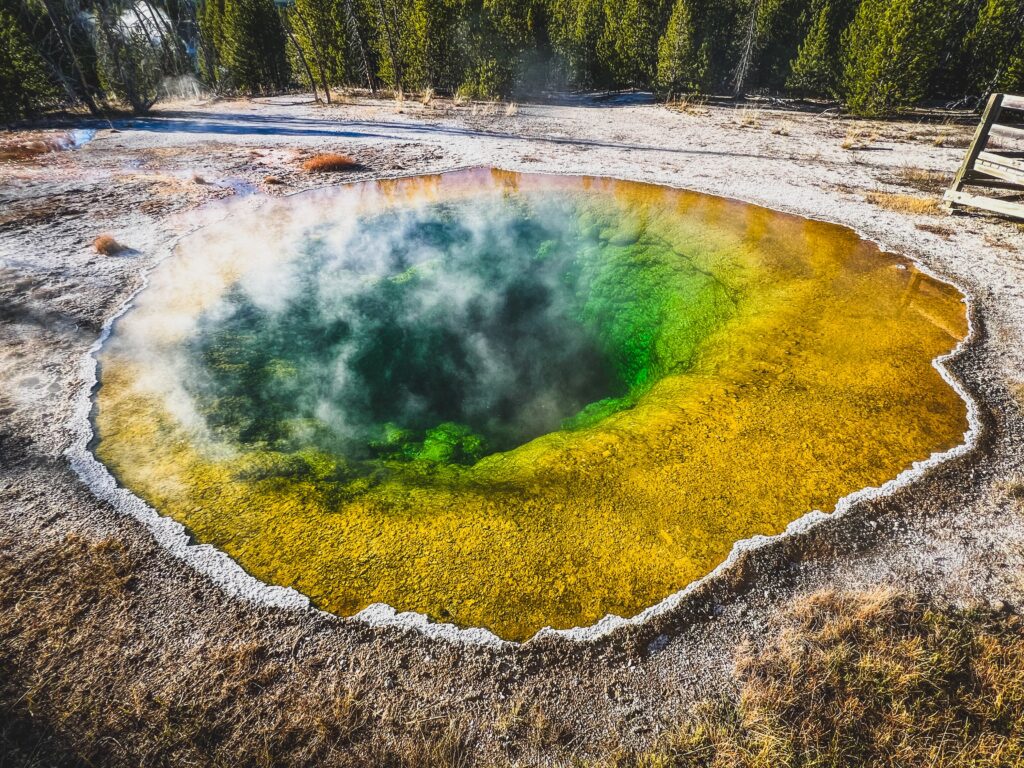
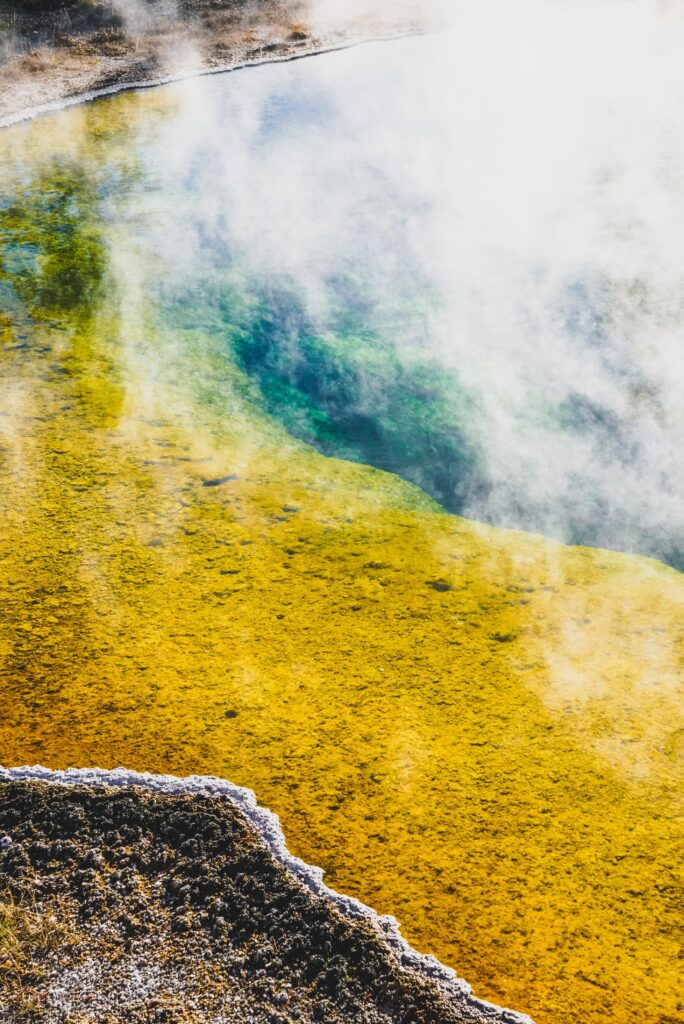
Being one of the most popular attractions in Yellowstone, I was shocked we had the Morning Glory Pool to ourselves, and barely saw another soul as we walked back to Old Faithful. This once blue pool has become victim to vandalism over the years, with people throwing rocks, coins, logs and trash into the pool. The debris became embedded in the sides and vent of the spring, reducing the water circulation and water temperature. Cooler temperatures have allowed orange and yellow-coloured bacteria to thrive.
With most of the park’s services closed for the season, the crowds were almost non-existent when we visited in mid October. This, in combination with chilly mornings (0 degrees celsius) and evenings, and visiting a lot of attractions in the couple of hours around sunrise and sunset, meant that we usually saw less than a handful of people. The most populated areas were Grand Prismatic Spring (ground level – I don’t recommend this, as all you see is steam and a line of people), and the Brink of the Lower Falls Trail and Fairy Falls Trail to Grand Prismatic Spring Overlook (~10 people at the overlooks at any one time, so not too bad). The viewing area for Old Faithful is big and the crowds disperse quickly, and if you are staying in the Old Faithful area, you can beat the tour bus masses by going first thing in the morning. It is dangerous to drive in the dark as large wildlife may pop out onto the roads without warning, so save the driving and exploring for daylight hours.
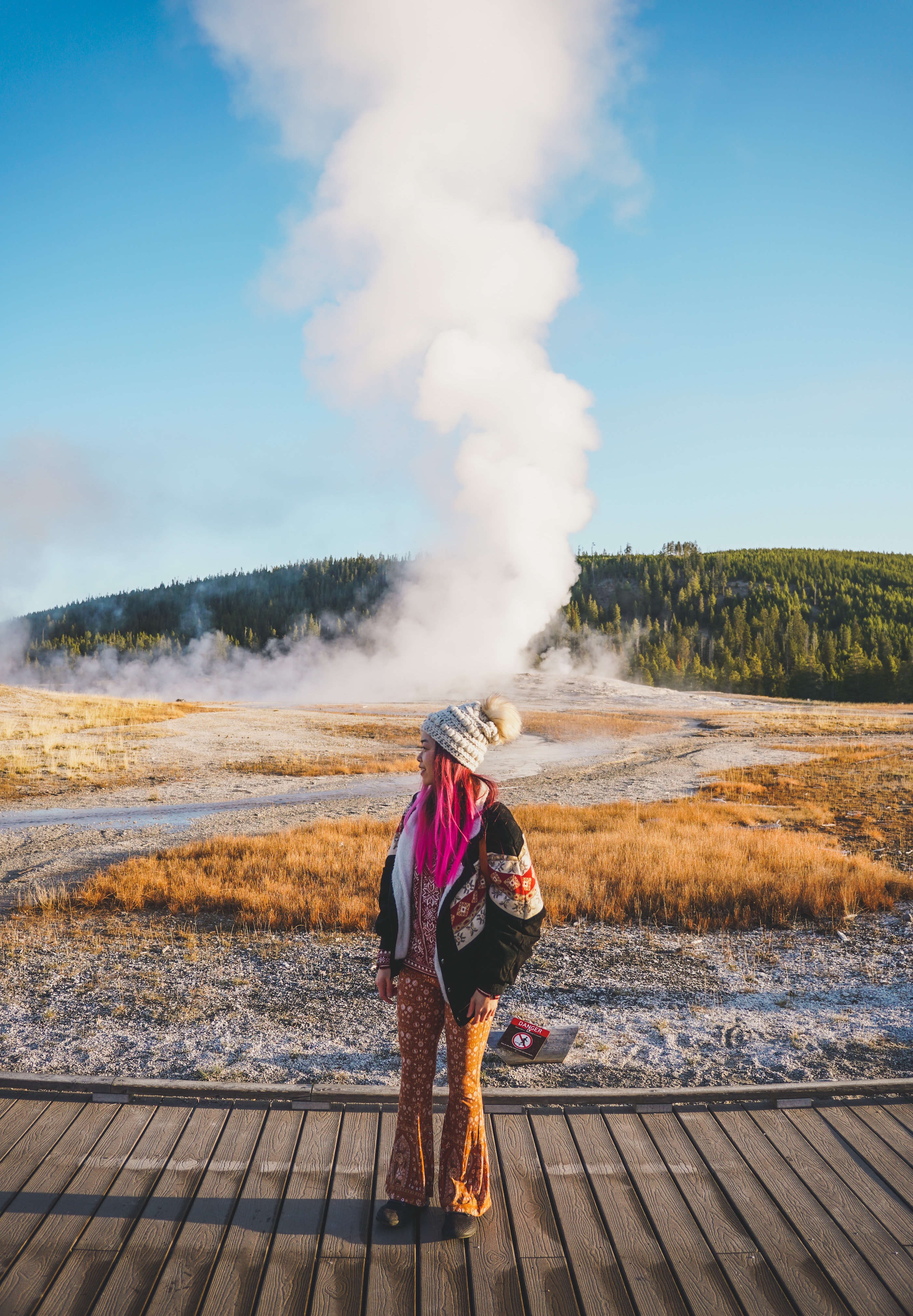
If you are limited in time and want to hit up the best spots on a day trip, here are my top recommendations for Yellowstone National Park:
- Old Faithful Geyser first thing in the morning (check eruption times)
- Upper Geyser Basin (depending on time, just the anticlockwise loop around Geyser Hill, or as far down as Sawmill Geyser, or all the way to Morning Glory Pool)
- Fairy Falls Trail to Grand Prismatic Overlook
- Brink of the Lower Falls Trail to the Lower Falls Overlook, with a drive along the North and South Rims
- If you have time to drive the lower loop clockwise, return via a stop at West Thumb Geyser Basin. If you still have more time before dinner, I also enjoyed Black Sand and Biscuit Basins for a quick jaunt.
- Dinner at Old Faithful Snow Lodge Obsidian Dining Room (bookings necessary)
You can check out our trip to both Yellowstone and Grand Teton National Parks in the video below – we really lucked out with sunny and calm weather, low crowds and no road closures (besides the flood damaged roads and entrances). Another week or two and the snow would have set in!

